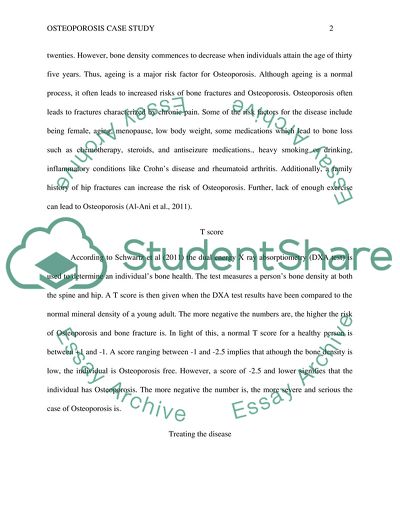Osteoporosis Case Study Example | Topics and Well Written Essays - 500 words. https://studentshare.org/medical-science/1879550-risk-factors-of-osteoporosis
Osteoporosis Case Study Example | Topics and Well Written Essays - 500 Words. https://studentshare.org/medical-science/1879550-risk-factors-of-osteoporosis.


